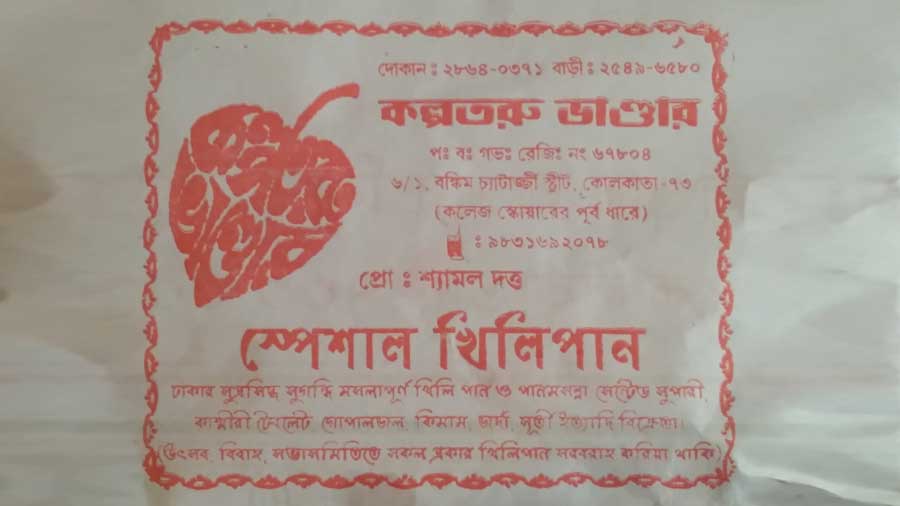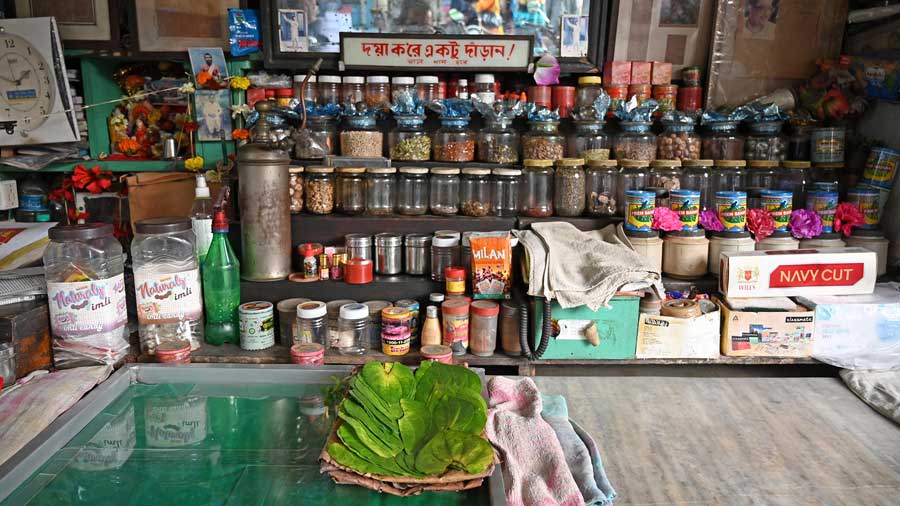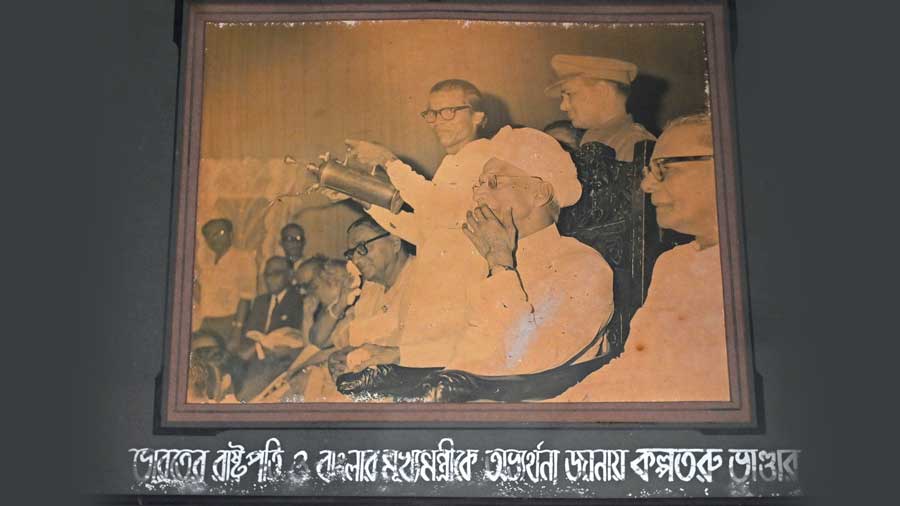Paan, or the betel leaf roll, the almost-ubiquitous end to a lavish Bengali (or Benarasi) meal, is popular across the country. Paan comes from the Sanskrit word ‘parna’, meaning leaf. The betel leaf-and-nut preparation is not only consumed as a ‘mukh shuddhi’ (mouth freshener), but the leaf is used in various rituals too. Paan pata is a must for any puja and is considered extremely auspicious. Even the bhog that is offered is incomplete without paan.
In a traditional Bengali wedding, the bride hides her face from the groom using betel leaves. It is so entwined with the Bengali lifestyle that even faces are compared to the shape of the leaf, ala ‘paan patar moto mukh’.

Mouni Roy does the Bengali thing! @meet_bros_manmeet/Instagram
‘Paan saaja’, i.e., assembling the paan, is a part of the daily chores of a typical Bengali household. Then there are paan-specific items too — like the jaati (a hand-held betel-nut cracker), and the paaner dibba (paan box) — without which the archetypal Bengali bhadralok wouldn’t leave home.
So, as paan became an intrinsic part of the lifestyle, commercial paan saaja also reached new heights. Today, every para and every corner of the city has a paan shop. Most prominent among them is the 92-year-old Kalpataru Bhandar, located on 6/1 Bankim Chatterjee Street (College Street). It is popular for its khili paan — a paan so delicate that it almost melts in the mouth and leaves a lingering aroma.

Kalpataru Bhandar is renowned for its ‘khili paan’ Barnini Maitra Chakraborty
The shop was set up by Radha Binod Datta after migrating from Bangladesh. Nestled in the boi para area, the shop was often frequented by intellectuals and the Coffee House crowd. “Seeing its growing popularity, my father asked patrons to write a few lines about the shop,” said Shyamal Datta, the present proprietor of the shop. “The quality of the paan was so good that it was a favourite of many. Even today, there has been no compromise on the quality and that’s the secret,” he said.

Condiments, ‘magic masalas’ and betel leaves Amit Datta
The first thing one notices about this small, open and quaint shop are the glass containers containing the condiments for paan. The two walls are covered with photographs of political patrons, as well as personalities like Manna Dey and Bhanu Bandopadhyay. Footballers P.K. Banerjee and Prasun Banerjee were regulars too, according to Datta.

A photograph of former President Sarvepalli Radhakrishnan, on the walls of Kalpataru Bhandar Amit Datta
The betel leaves found in this shop are essentially mitha pata (sweet leaf) and are kept under a thin muslin cloth. The making and assembling of the paan is entertaining too — with a pinch of this, a pinch of that and voila! After the paan is made, it is enfolded in a pink wrapping paper with a drop of ator on it. It is then put in an envelope and served.
The paans have interesting names as well and range from Rs 5 to Rs 1,001. The combination of different condiments and the ‘magic masala’ of Kalpataru make them distinct from each other. The Rs 5 variety is called Mukhoranjan, Rs 11 for Mukh Bilash, Rs 51 for Mon Matowara and so on.

‘Kindly be patient’, reads a sign on the wall — a hark back to the shop’s busier days Amit Datta
While the masalas come from different parts of the country, the areca nuts are sourced from Assam and Chennai, and the betel leaves from Bhubaneswar.
But Datta is sceptical about the future. He feels the paan is losing ground in the competition with the paan masalas and other readymade mouth fresheners. “People spend lakhs on a marriage, but refuse to pay for a good paan. This is unfortunate — a part of our food culture is dwindling away,” he laments.
